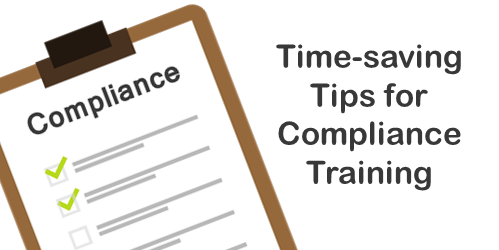
Last week we looked at some of the issues with compliance-based elearning and how taking a different approach to its design can save your organization time and money. And of course an additional benefit is that it makes your employees happier. There are a number of good comments to the post and some ideas that you can explore.
Many times, how we approach building our compliance training is based on hearsay or regulatory urban legends. So we end up with bloated and time consuming courses that only serve the purposes of sleep-deprived insomniacs.
One of the key points of last week’s post was to contact your legal department and find out what are the real requirements for your organization. Then build your training around them rather than what you think the regulations say.
The ideal is to meet your compliance needs and at the same time identify legitimate gaps in understanding. This allows you to address those gaps and provide the type of intervention that gets people up to the desired skill and performance level.
While there are many ways to design your elearning courses, today’s post features three simple strategies that will help you meet your certification needs and get your people back to work.
1. Create a Pre-Assessment
Put the certification test at the beginning of your course. Make it a very comprehensive assessment so that you can truly identify their knowledge and skill level. If the user passes the test, he jumps to the end and is certified. If the user doesn’t pass, then you direct him to the course where he can get remedial training and additional assistance.
Keep in mind that even though it’s an assessment doesn’t mean it has to be a standard multiple choice or true/false quiz. You can do an assessment as a series of case studies or scenarios, as well as a traditional quiz.
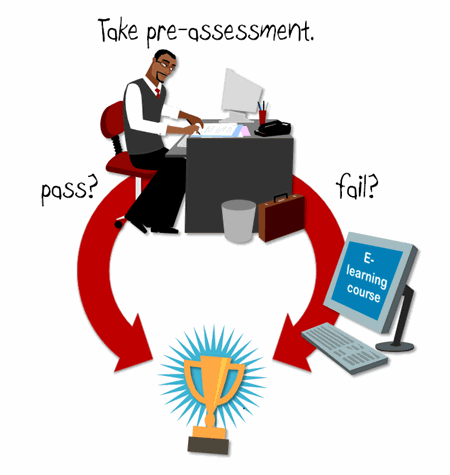
How you design the assessment and course is up to you. You can use a simple linear approach, or create a dynamic scenario-based process. It really doesn’t matter. The point is that even if you use a simple structure like this, you can make the assessment more than a click-and-read process and, instead, make it as engaging as you want.
2. Empower the User
The first idea is to create the assessment up front and then direct the user based on the assessment result. While it is a simple approach and easy to design, this can be intimidating for some users. Here’s a way to soften it up and empower them at the same time.
Instead of just starting with the assessment, give the user a choice. Tell them that they can go through the course and at any time they like, attempt to take the assessment. Then unlock the course so the user can navigate it and see what’s covered.
Think of it this way. You go to a book store and look through the pages of a good book on elearning. Most likely, you’ll look at the table of contents, and then perhaps go to the index and look for specific areas of interest. If you’re visual, you’ll flip through the pages to see what type of illustrations and examples are in the book. It’s your way of assessing the book’s value and relevance.
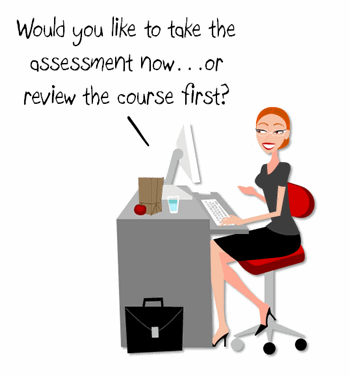
In a similar sense, when it comes to elearning courses, many people like to skim through the course content to get a sense of what’s in it. Once they see the content and how it’s laid out, they get a sense of what they know and can determine if they need the course or not to help them pass the assessment. This is why it’s important to unlock the course and give the learners room to explore.
Remember, these are courses for people who most likely already know the content and just need to demonstrate it and be certified. It’s kind of like an experienced driver getting a new license. The driver doesn’t need to take a driving class. Instead, she takes a driver’s test. If she passes, she gets a license. If she can’t pass the test, she takes a class and practices until she can.
Using this approach lets the user see what’s required and mentally assess what he does or doesn’t know. He can jump into a few sections to test his knowledge and comfort level and then take the assessment at any time. In addition, odds are that he will self-assess and identify the area where he needs to know more and then review those sections.
3. Break the Content into Sections
Even if you can create courses with pre-tests, I’ve found that some organizations still won’t do it. They’ll still request a formal “course.” I’ve had customers tell me that even if people already know the information, it doesn’t hurt them to go through the course anyway. I assume they think the information is going to stick to the learners like a static cling sock right out of the dryer.
In addition, some customers just aren’t comfortable with this type of approach where the user can self-navigate and choose when to take the assessment. They don’t like the fact that people can test out. Instead, they want them exposed to something that resembles a course.
While some customers shy away from a pre-test and still want a formal course, I’ve found that many are flexible enough to embrace the following approach.
Break the course content into distinct sections. At the beginning of each section, give the user a choice to assess or go through the content. At the end of all of the sections, do a final assessment.
You can still capture some time savings because a knowledgeable person can go through each section and test out quickly. However, by breaking it into sections you can be more specific in the assessment process and catch areas where people might not be as fluent.
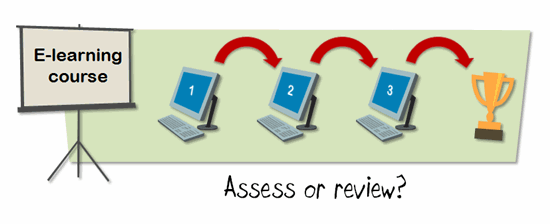
For example, if you only had one assessment for a course, a person might pass at 80% and be certified. However, what happens if the 20% she didn’t get correct was all from the same area? That could be a potential problem.
The advice in this post probably doesn’t work for courses where you’re trying to teach new skills. However, if you do a lot of certification or annual refresher training, these three approaches should come in handy.
If you do something different or have an approach that you’d like to share with the community, feel free to do so.
Events
Free E-Learning Resources















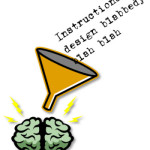
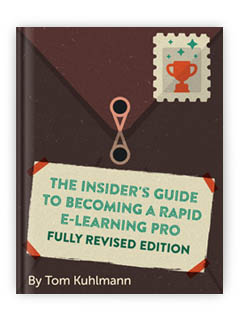


0
comments